
Agelenopsis, commonly known as the American grass spiders, is a genus of funnel weavers described by C.G. Giebel in 1869. They weave sheet webs that have a funnel shelter on one edge. The web is not sticky, but these spiders make up for that by running very rapidly. The larger specimens can grow to about 19 mm in body length. They may be recognized by the arrangement of their eight eyes into three rows. The top row has two eyes, the middle row has four eyes, and the bottom row has two eyes. They have two prominent hind spinnerets, somewhat indistinct bands on their legs, and two dark bands running down either side of the cephalothorax.

Lithobius is a large genus of centipedes in the family Lithobiidae, commonly called stone centipedes, common centipedes or brown centipedes.

Harpaphe haydeniana, commonly known as the yellow-spotted millipede, almond-scented millipede or cyanide millipede, is a species of polydesmidan ("flat-backed") millipede found in the moist forests along the Pacific coast of North America, from Southeast Alaska to California. The dark coloration with contrasting yellow-tipped keels warn of its ability to exude toxic hydrogen cyanide as a defense. The cyanide secretions are not dangerous to humans, but can cause irritation and pain if it contacts sensitive areas such as the mouth, eyes, or nose.
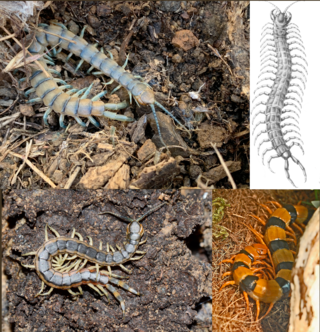
Scolopendra is a species-rich genus of large tropical centipedes of the family Scolopendridae.

Abagrotis is a genus of moths of the family Noctuidae.
Petalumaria is a monotypic moth genus of the family Noctuidae. Its only species, Petalumaria californica, is found in the US state of California. Both the genus and species were first described by John S. Buckett and William R. Bauer, the genus in 1967 and the species three years earlier in 1964.
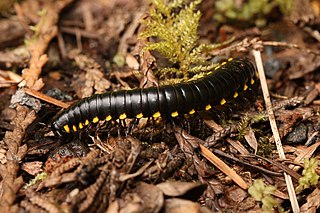
Harpaphe is a genus of flat-backed millipedes native to the Pacific Northwest of North America. The genus contains three described species: two occurring only in northern California, and one with a large range extending from Southeast Alaska to Central California.

Agyneta is a genus of dwarf spiders that was first described by J. E. Hull in 1911.
Anethoporus is a genus of spirostreptid millipedes native to northern South America, where they range from Peru to the islands of Trinidad and Tobago. The genus and type species, A. clarki, was established by Ralph V. Chamberlin in 1918.

Gosodesmus is a genus of platydesmidan millipede, described by Ralph V. Chamberlin in 1922, that is widely distributed in the U.S. state of California. It is monotypic, being represented by the single species, Gosodesmus claremontus, commonly known as the pink feather boa millipede. Individuals vary in color from bright pink to coral, and may possess a black or purple dorsal stripe. Body length ranges from 17 to 27 mm, with up to 81 body segments. Gosodesmus claremontus occurs on the Coast Ranges as well as the Sierra Nevada, and is often found within rotted wood, especially oaks. In 2020, chemist Dr. Tappey Jones at Virginia Military Institute and colleagues, discovered a novel natural product and alkaloid in the chemical defense secretion of G. claremontus: (1), 7-(4-methylpent-3-en-1-yl)-1,2,3,5,8,8a-hexahydroindolizine, known as gosodesmine.
Calilena is a genus of North American funnel weavers first described by R. V. Chamberlin & Wilton Ivie in 1941.

Geophilus is a large, heterogeneous genus of soil centipedes in the family Geophilidae largely considered to be synonymous with Brachygeophilus. This genus is mostly Holarctic and characterized by a claw-shaped ultimate pretarsus, complete or nearly complete coxo-pleural sutures at the prosternum, and incomplete chitin-lines. Centipedes in this genus feature slightly elongate heads and labral intermediate parts with tubercles, the forcipules are usually poorly elongate with a single small tubercle at the base of each tarsungulum, and the anterior trunk metasternites usually have an anterior medial socket and a posterior transversally elongate pore-field. The generic name first appeared in Brewster's Edinburgh Encyclopaedia in 1814 as Geophilus electricus.
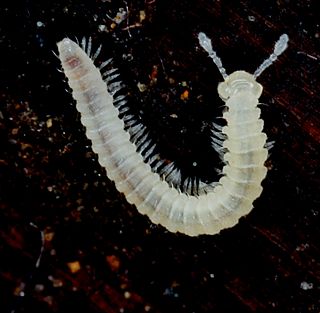
Conotylidae is a family of millipedes in the order Chordeumatida. Adult millipedes in this family have 30 segments. There are about 19 genera and at least 60 described species in Conotylidae.
Chonaphini is a tribe of flat-backed millipedes in the family Xystodesmidae. There are about 6 genera and 19 described species in Chonaphini.
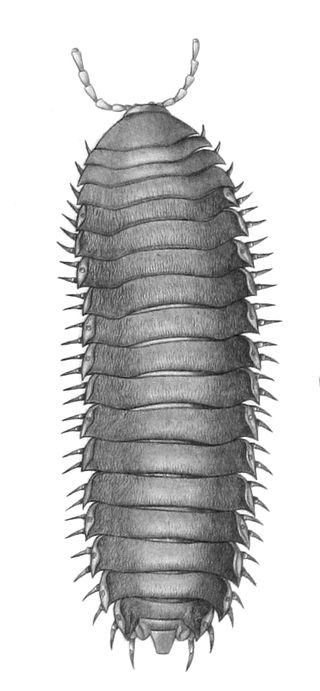
Rhysodesmus is a genus of flat-backed millipedes in the family Xystodesmidae. There are at least 90 described species in Rhysodesmus., ranging from El Salvador to the Southern United States.
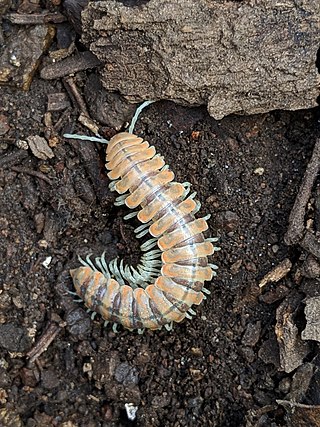
Xystocheirini is a tribe of flat-backed millipedes in the family Xystodesmidae. There are about 5 genera and more than 40 described species in Xystocheirini.
Anombrocheir is a genus of millipedes belonging to the family Xystodesmidae.
Paimokia is a genus of millipedes belonging to the family Xystodesmidae.
Alan Buckett, sometimes referred to as John Buckett, was an English football manager.











